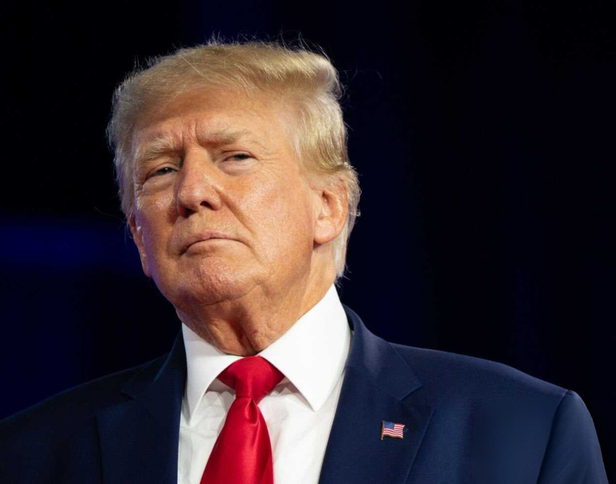December 02, 2024
Trump Threatens Bloc of Nine Nations With ‘100% Tariff’
The president-elect said the levies would be aimed at the BRIC alliance, which includes major economies like China, India and Brazil.
Key Takeaways
• Potential New Tariffs: President-elect Trump threatens 100% tariffs on BRIC nations to counter actions the nations are reportedly considering that he believes will undermine the U.S. dollar on the global stage.
• Promo Impacts: If enacted, the tariffs could affect the promotional products industry by increasing costs and shifting manufacturing.
• Just Tactics? Trump’s tariff threats may be negotiation tactics, but it’s not entirely clear.
President-elect Donald Trump has threatened to impose import tariffs of 100% on a bloc of nine nations that have floated the idea of creating a currency that would rival the U.S. dollar in global business transactions.
The announcement, which Trump made Saturday, Nov. 30, came just days after the soon-to-be 47th president of the United States vowed to impose import levies of 25% on Canada and Mexico, as well as an additional 10% tariff rate on goods coming stateside from China.

Higher tariff rates could impact the promotional products industry, potentially doing everything from driving up the prices suppliers charge on products to compelling additional shifting of merch manufacturing from higher-tariffed countries to lower-tariffed or non-tariffed nations.
Trump’s latest tariff threat is against BRIC, an alliance that encompasses Brazil, Russia, India, China, South Africa, Egypt, Ethiopia, Iran and the United Arab Emirates. Azerbaijan, Malaysia and Turkey have applied to become members.
Politicians in Brazil and Russia have indicated they’d like to establish a BRIC currency to lessen the U.S. dollar’s lead role in international trade. The U.S. dollar accounts for nearly 60% of the planet’s foreign exchange reserves, according to the International Monetary Fund. Major commodities, like oil, are typically bought and sold in dollars.
Still, as the economies of BRIC nations grow and account for a greater percentage of global trade, the alliance has expressed an interest in de-dollarizing, to at least an extent, global trade.
Trump wants to nip the effort in the bud.
“The idea that the BRICS Countries are trying to move away from the Dollar while we stand by and watch is OVER,” Trump wrote on Truth Social, his social media network. “We require a commitment from these Countries that they will neither create a new BRICS Currency, nor back any other Currency to replace the mighty U.S. Dollar or, they will face 100% Tariffs, and should expect to say goodbye to selling into the wonderful U.S. Economy.”
Still, it’s a big question mark whether Trump is serious about moving forward with tariffs or using the threat of levies as a big stick to wield in pressing for U.S. interests in international relations. Some think the levy threats are negotiating tactics.
“It’s escalate to de-escalate,” Scott Bessent, Trump’s pick for Treasury Secretary, said before he was nominated for the role. “My general view is that at the end of the day, he’s a free trader.”
Trump’s tariff threats on Mexico and Canada appeared to prompt immediate responses from those nations’ leaders. Mexico’s President Claudia Sheinbaum held a call with Trump and subsequently said she’s optimistic that a tariff battle with the U.S. could be avoided.
Canadian Prime Minister Justin Trudeau flew to Florida to meet with Trump last week to discuss the levy situation but wasn’t assured by the president-elect that the potential for tariffs was off the table.
“A lot of people expect Trump to be a negotiator, so I think this is a beginning of discussions or beginning of negotiations,” Michael Hart, the president of the American Chamber of Commerce in China, told The Wall Street Journal.
Even so, Trump has showed that he’s not afraid to impose import levies.
During his first term in the White House, Trump enacted tariffs on goods inbound from China, a move that contributed to price increases on promotional products domestically. The vast majority of promo products sold in North America are manufactured overseas, with China being the industry’s dominant sourcing destination.
Exactly what impact tariffs could have on promo will be contingent on what, if any, additional levies Trump enacts and at what rates.
During his campaign, Trump had discussed implementing duties of 10% to 20% on all imports, with a tariff rate of 60% or more possible on China-made goods. Such levies would likely compel suppliers to pass on the additional costs of importing to distributors, industry leaders told ASI Media. While some shifting in promo manufacturing may occur, most industry leaders do not anticipate a widespread return to domestic merch manufacturing any time soon, saying the logistics and costs make that unfeasible.
Both distributors and suppliers say it will be critical to monitor how the tariff situation unfolds and to plan for eventualities without overreacting.
“The tariff situation remains fluid and constantly evolving,” Joseph Shusterman, CEO/co-founder of BlueMark (asi/142002), told ASI Media recently. “The key is maintaining options and diversifying to adapt as circumstances change.”
Tariffs are a tax the government imposes on imports or exports. They generate revenue for the government. In the case of import duties, the levies can help regulate foreign trade and, the thinking goes, safeguard domestic industry from being completely undercut by lower-cost overseas competitors.
Nonetheless, analysts say that tariffs ultimately hit the budgets of many domestic businesses and households across the United States. As importers pay higher prices, many pass some or all of the costs along, resulting in higher prices for consumers and other end-buyers.
